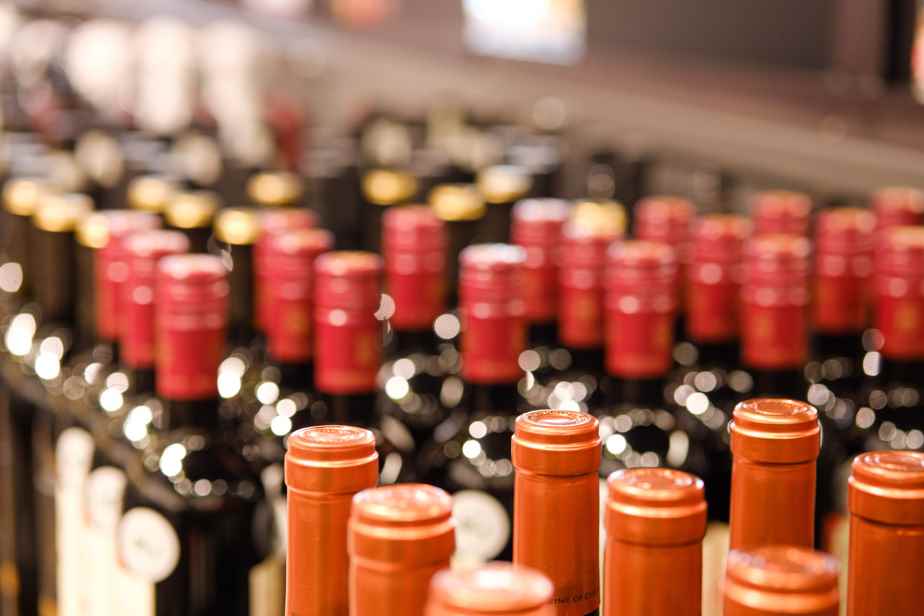If you are a fan of Quebec wine, prepare to pay more for your 2022 cuvées, the year having given low yields to the vineyard, while production costs have increased.
“It was the perfect storm,” confirms Éric Blouin, co-owner of Clos Sainte-Thècle, in Mauricie.
Inputs, fertilizers and pesticides, cost more and labor wages have been improved. Wine takes time and effort to make, from vine to bottle.
Precisely, the price of (empty) bottles has also increased.
The Mauricie winemaker is paying around $18 a case of 12 Burgundy bottles this year. It was just over $10 last year.
“Ukraine was a major bottle manufacturer,” says Sébastien Daoust, owner of the Les Bacchantes vineyard in Hemmingford and treasurer of the Conseil des Vins du Québec.
If we have global suppliers who are no longer available because of the events we are experiencing, that means that our bottles will be more expensive. Corks are more expensive too, for transportation reasons. Everything is more expensive, including our financing cost.
Sébastien Daoust, owner of Les Bacchantes vineyard
As winegrowers are entrepreneurs, they too have to deal with rising interest rates, among other things.
At the Bacchantes, Sébastien Daoust will slow down his investment projects next year, precisely so as not to increase expenses too much.
Rather, the winemaker wants to put in the effort to optimize the ways of doing things, both in the field and in the cellar, in order to gain in efficiency.
Fewer bottles
Especially since the years in agriculture are very unpredictable and 2022 has clearly not been the best for the winegrowers here.
At Clos Sainte-Thècle, we produced 7,000 bottles in 2021 and there should be around 4,000-4,500 for the 2022 cuvées, apart from the piquette, which is a new product. Next year, Éric Blouin estimates that his wines will cost around 20% more.
“The quality is there, but not the quantity,” he says.
Le Clos Sainte-Thècle is lucky to be one of those vineyards whose wines we tear ourselves away from. All its 2021 cuvées are sold out for sale directly at the vineyard. You have to be lucky to find it in the store.
In Quebec, local wines can be found in restaurants, vineyards, but also in specialty shops that showcase local alcohols, general grocery stores and, increasingly, in SAQs.
This price pressure is not unique to the smallest and youngest vineyards in Quebec.
“We all experience the same increases, whether we buy 100 bottles or 100,000! says Daniel Lalande, owner of the Rivière du Chêne vineyard, who will be 25 next year.
“Our bottle went from $0.58 pre-COVID to $1.15, on average. We produce more than 400,000 bottles, do the math. It’s $200,000 [supplémentaires] just in bottles. I don’t count capsules, I don’t count labels. »
“We will tell each other, the COVID has a wide back. All of a sudden, everything costs more,” continues Mr. Lalande.
A developing market
According to Sébastien Daoust, we must be careful in raising the price of local wines.
“I anticipate an economic slowdown, explains this winegrower, son of a banker. Wine is considered a luxury product, so prices will have to be adjusted accordingly. We lived through a pandemic where the consumer’s discretionary dollar went very quickly towards wine and the little pleasures of life, since we couldn’t afford the great pleasures of travel. I think we’re going to have a counterpart of that. »
The price of Bacchantes wines has increased by 10% this year. “I’m not sure I’ll increase next year,” says Sébastien Daoust, who is playing it safe.
Daniel Lalande has also decided to partly absorb the increase in operating costs on its profit margins. The price of wines from its two vineyards will have an average increase of 4%. “It’s minimal,” says the winemaker. Well below what should have been increased. But we want to have good value for money rather than overpriced wines. »
On the retail side, the rise in the price of Quebec wine is not easy to manage either.
“We really benefited from the craze for local purchases and Quebec wines during the pandemic,” confirms Pascale Rémond, co-founder of the Les Minettes boutique, which is located in Vieux-Sainte-Rose. Now, the credibility of these wines is established and the link is well established with part of the clientele. The problem: inflation.
The price of wine continues to rise and now people are paying much more attention compared to the last two years. Whether for wine or other local products.
Pascale Remond
In the case of wines, Pascale Rémond explains that profit margins are already slim for products from small vineyards.
Price increases, in the current context, appear. As small as they are.
“Customers buy less, concedes Pascale Rémond. It was very common to see customers walk out with boxes of twelve. Now they are more selective. »
At the SAQ too, customers are selective, according to Sébastien Daoust. And the price can be decisive.
“Quebec wines represent between 1% and 1.5% of wine consumption in Quebec,” recalls the entrepreneur. And the next 1% [à aller chercher] is more sensitive to price, more sensitive to availability. He will go through an SAQ to pick up his wine, not necessarily through a specialized boutique, and this must be taken into consideration in a growth plan. »
Learn more
-
- 35%
- Quebec wines are mainly sold in grocery stores (35%), then at the SAQ (30%), at the vineyard (27%) and finally in restaurants (6%).
SOURCE: Quebec Wine Council
- 2.4%
- The SAQ increased the price of 1,458 products (all origins combined) by 2.4%, on average, at the beginning of the month.
SOURCE: SAQ
